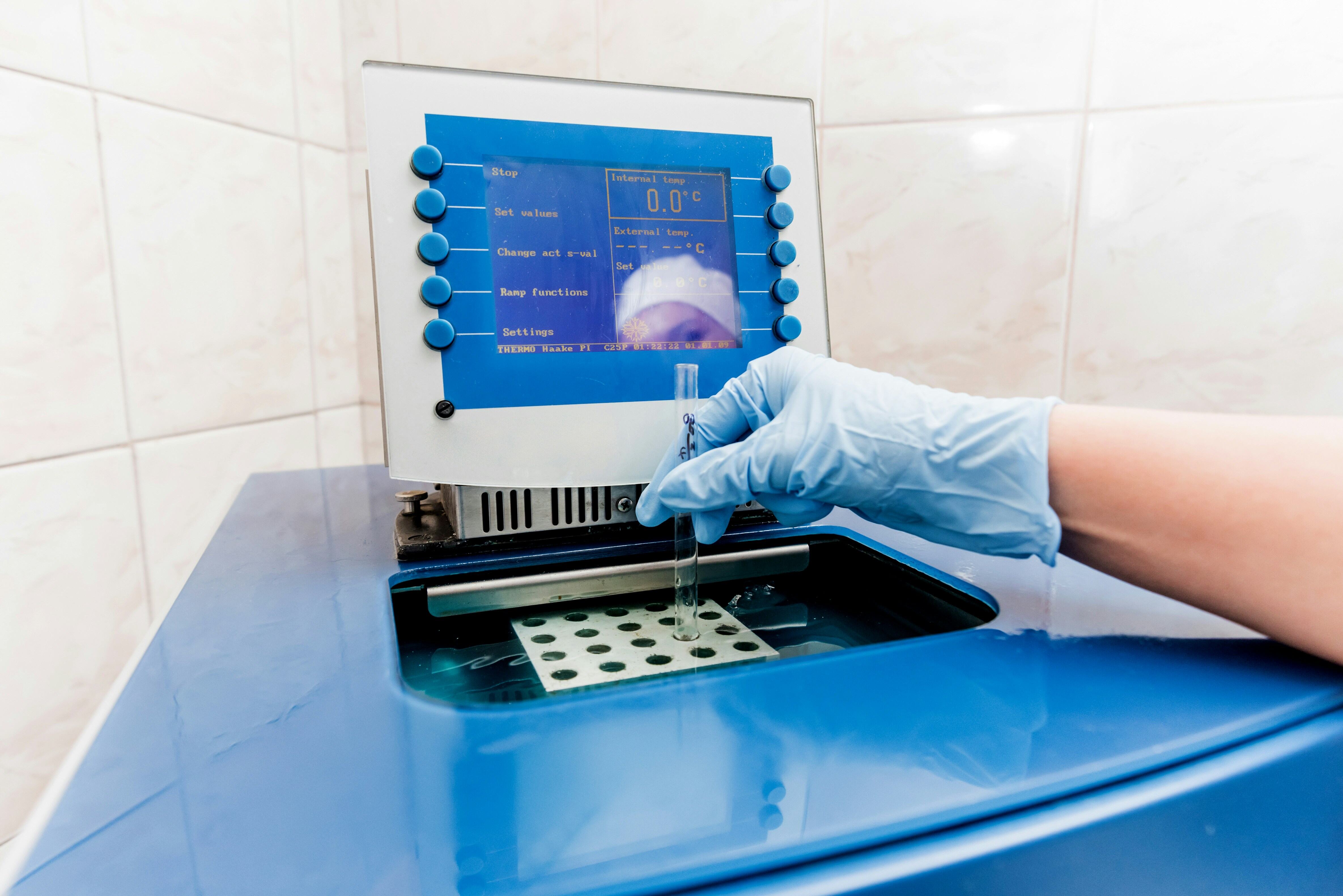Insights
How to Attract Top Talent through Biometrics Recruitment
22 Sept, 20238 minutesWith the size of the global Biometrics market expected to reach $19bn by 2028, it’s li...

With the size of the global Biometrics market expected to reach $19bn by 2028, it’s likely that remaining competitive within the clinical trials environment will require organisations to attract and retain the best talent from across the field. With a growing demand for clinical trial data analysis expertise, acquiring candidates for Statistical Programming, Biostatistics, or Clinical Data Management roles will become increasingly challenging.
This guide explores how you can attract top talent through the latest Biometrics recruitment strategies. We’ll discuss why there’s a growing demand for Clinical Data Management skills across the industry, addressing common misconceptions around Biometrics roles before we highlight what hiring managers should look for when assessing and interviewing candidates.
Before we review what we’ve learnt, we’ll also illustrate some effective Biometrics recruitment strategies that you can put into practice to improve your organisation’s chances of snagging that much-needed professional hire.
The Growing Demand for Biometrics and Clinical Data Management
Biometrics recruitment can prove challenging for even the largest life science organisations. With the growing adoption of digital Biometric Monitoring Technologies (BioMeTs), real-world data, and wearable healthcare devices, clinical researchers often have huge volumes of data to wade through, report on, and keep secure with the process of statistical analysis in clinical trials requiring an increasingly complex set of duties.
As a result, the demand for Biometrics and Clinical Data Management professionals is on the rise—with the unique skill sets of these individuals being leveraged across all areas of the clinical research process to support trial quality and turn results and healthcare data into understandable, actionable, and insightful outcomes.
These developments within the clinical trials environment are enabling the evolution of several roles, from Statistical Programming to Clinical Data Management. Far beyond simply analysing data, Biometrics professionals play a vital role in study design, determining effective sample sizes, selecting statistical methodologies, and interpreting results.
Whilst Biometrics professionals can’t altogether eliminate surprises or errors in patient, drug, or device data, through proper Clinical Data Management techniques, organisations can better visualise study outcomes and treatment efficacy, enabling the reporting of reliable and statistically sound data.
Indeed, the employment figures support this, with demand for Statistical Programmers alone anticipated to increase by 10% to 12% annually over the coming decade.
By enhancing the accuracy and reliability of the data they’re reporting on, Biometrics professionals are playing a critical business and patient care role in meeting the strict standards, regulations, and guidelines that the wider clinical trial industry is subject to. Through innovative and adaptable approaches to study design, clinical data management, and statistical programming, these experts contribute to the creation of effective trial processes, expediting drug development timelines and improving healthcare outcomes.
Emerging technologies, such as the aforementioned wearable devices, alongside artificial intelligence and machine learning applications, are also driving the evolution of Biometrics recruitment. It’s no longer the case that patient identification, enrollment, and tracking are something that awaits Biometrics professionals of the future—these technologies are here now, helping to improve the efficiency, accuracy, safety, and security of data collection processes.
The growth of wearables means that trial participants can be monitored remotely, with real-time data offering insights into adverse events and side effects that might not arise during a participant’s time at the trial site.
Biostatisticians, Clinical Data Management experts, and programmers in Clinical Coding jobs will all be key to ensuring that future drug and device therapies will be better tolerated and further healthcare outcomes whilst minimising the impact that these treatments can have on patients’ quality of life.
If you’re interested in learning more about how Warman O’Brien has championed the Biometrics field after reading this article, see our case study on how we helped a growing consultancy to hire 42 contractors, providing an in-depth insight into the real-world challenges faced by life science organisations when it comes to attracting these in-demand professionals for roles which emphasise the importance of statistical analysis in clinical trials.

Understanding Biometrics Recruitment: What To Look For
Whether you’re looking to understand Biometrics recruitment due to a desire to employ professionals on a contract or permanent basis, hiring managers should consider a handful of key aspects when assessing candidates. This includes:
- Technical expertise. Biometrics recruitment typically focuses on professionals with the specialised knowledge and skills to parse through health and clinical trial data, particularly when it comes to Statistical Programming-focused roles and Clinical Coding jobs.
- A communicative and collaborative approach to their work. The clinical trials environment requires candidates who are prepared to work in close partnership with colleagues and stakeholders across a range of internal and business-critical functions. No matter what level of seniority your Biometrics recruitment initiative is focused on, it’s important to ensure candidates have the skills needed to work effectively in the team-driven landscape of clinical research.
- Adaptability and innovation. As we’ve already mentioned, employing a Clinical Data Management or Statistical Programming professional does not guarantee that data will be error-free. Biometrics experts need to be prepared to adapt to the dynamic pace of the clinical trial process and to utilise unique and innovative methods to support their colleagues and ensure the reliability and accuracy of their reports.
- Familiarity with regulatory compliance. Ensuring patient safety, information security, and data integrity are crucial to any role within Biometrics, whether the appointment is an interim or permanent one. Assessors and interviewers should feel confident that candidates have a good grasp of the industry and governing body regulations in place when they’re interviewing for roles focused on statistical analysis in clinical trials, such as Good Clinical Practice (GCP) or the US Food and Drug Administration’s Human Subjects Protections.
- A commitment to life-long learning. To ensure that they can comply with industry standards and drive innovation and productivity within the clinical trials environment, biometrics professionals need a proactive approach to continuously improve their professional skills and knowledge.
Of course, professional or academic qualifications within mathematics, computer science, or a life sciences-adjacent field such as biology or chemistry can act as a means of identifying candidates that possess the basic requirements for all of these skills and competencies, but the true extent of their expertise will need to be ascertained during the assessment and interview stage.
These roles can significantly impact a research organisation’s overall success. Regulatory approval often hinges on a robust data collection strategy and the accurate and reliable reporting of healthcare outcomes and results. This means that your organisation’s success is likely tied to your ability to attract, onboard, and retain the candidates you discover through your Biometrics recruitment exercises.
Effective Biometrics Recruitment Strategies
So, how can a clinical research organisation ensure it’s doing everything possible to attract the best Biometrics professionals to its Clinical Data Management and Clinical Coding jobs?
The Importance of Employer Branding
Your primary concern should be ensuring that you have a strong employer brand backing up your talent acquisition strategies. You can’t solely rely on the impact you’ve had within the clinical trials environment or the therapies you’ve helped to bring to the market—it’s also important to highlight your unique value proposition as an employer.
In-demand candidates such as Biometrics professionals want to know that they’re not only working towards a shared goal, guided by a shared purpose, but that they’re giving their time to an organisation whose values, culture, and commitment to innovation they share.
This means that you ought to have a robust diversity, equality, and inclusion strategy that welcomes candidates from diverse backgrounds. Life sciences are a leading sector when it comes to empowering women in business, for instance, with 39% of senior leaders working across the field identifying as female—and candidates are aware of this. Your organisation should be doing all it can to encourage individuals from all walks of life to apply, interview, and achieve career success with you.
When it comes to championing your commitment to EDI, you can use all of the channels at your disposal to highlight this—from sharing images of your team on your website to highlighting the successes of your staff from diverse backgrounds via your social media page. Alongside this, your job descriptions are also a way of articulating your dedication to equality and diversity. Ensure the language that you use isn’t exclusionary, and highlight your credentials as an employer of candidates from all backgrounds.
Similarly, it’s important to highlight your investment in enhancing the skills of your employees and providing opportunities for internal mobility. By building a culture of learning and development and offering recognition and rewards for high performance, you can demonstrate that you value your employees and, moreover, that you’re dedicated to helping them achieve their career goals.
There are plenty of ways you can illustrate that you’re focused on enhancing your candidates' skills and career mobility. Job descriptions should also note the progression pathway that you envisage for the role.
For instance, you could highlight that your learning initiatives will lead a candidate from a Biostatistician I / II role to that of a Senior Biostatistician. Alongside this, you can encourage employees to share their thoughts on professional development opportunities within your organisation through social media channels or your company blog, which can help entice early-career candidates looking for a long-term, stable role within a learning-focused culture.
Comprehensive and Effective Job Advertisements
When it comes to senior and executive roles, it’s important for your organisation to identify and evaluate your existing workforce's skills.
This talent mapping exercise can help you understand the experience, strengths, and weaknesses of employees involved in your Clinical Data Management or Clinical Coding jobs, helping you more accurately define the responsibilities and duties of an incoming manager or executive.
Personalised, targeted job advertisements, with descriptions that offer valuable insight into the nature of the Biometrics role and how success will be measured for the right candidate, can go a long way towards encouraging potential hires to apply.
Research conducted by Indeed has found that over half of job seekers consider the quality of advertisement and recruitment materials, including an in-depth description of the role and how it will develop, as “very” or “extremely” influential in their decision to apply for a position.
Virtual—or physical—careers fairs can be an effective way to connect with ambitious graduate talent if you're recruiting for entry-level or early-career roles. Likewise, utilising the services of a talent partner who’s well-versed in the life sciences industry and familiar with the sector-specific job platforms for roles focused on Clinical Data Management or statistical analysis in clinical trials can go a long way towards increasing the likelihood of discovering the right person for mid-level and senior positions.

Key Findings
Effective Biometrics recruitment strategies are essential for attracting top talent to your vacant roles. Clinical Data Management and Clinical Coding jobs are experiencing a growing demand, but finding a candidate with the right blend of ambition, skills, and expertise can be challenging.
Emerging technologies such as wearable medical devices underscore the need for organisations to recruit effective and productive professionals for their clinical trial data analysis tasks. By leveraging innovative recruitment approaches that emphasise the importance of technical knowledge, communicative and collaborative competencies, an ability to adapt and innovate, and commitment to life-long learning, clinical research organisations can successfully attract and retain these in-demand experts.
Building a strong employer brand that highlights your values and principles and the potential opportunities for employee development are crucial in the Biometrics recruitment process. Similarly, personalised job advertisements that contain a valuable and enticing level of detail can enhance your talent acquisition strategy.
Ultimately, the success of organisations across the clinical trials industry hinges on their ability to effectively attract, onboard, and retain skilled professionals in Biometrics, Clinical Data Management, and Clinical Coding jobs.
Experts in Biometrics Recruitment
Warman O’Brien’s specialist consultants have a track record of connecting market-leading pharmaceutical and clinical research organisations with the Biometrics talent they need to achieve success. Whether you’re looking to expand into new markets, scale up your operation, or discover a leader to drive productivity and efficiency, we’re here to support you.
No matter how complex your hiring needs are, get in touch with us for a no-nonsense discussion of your requirements.



